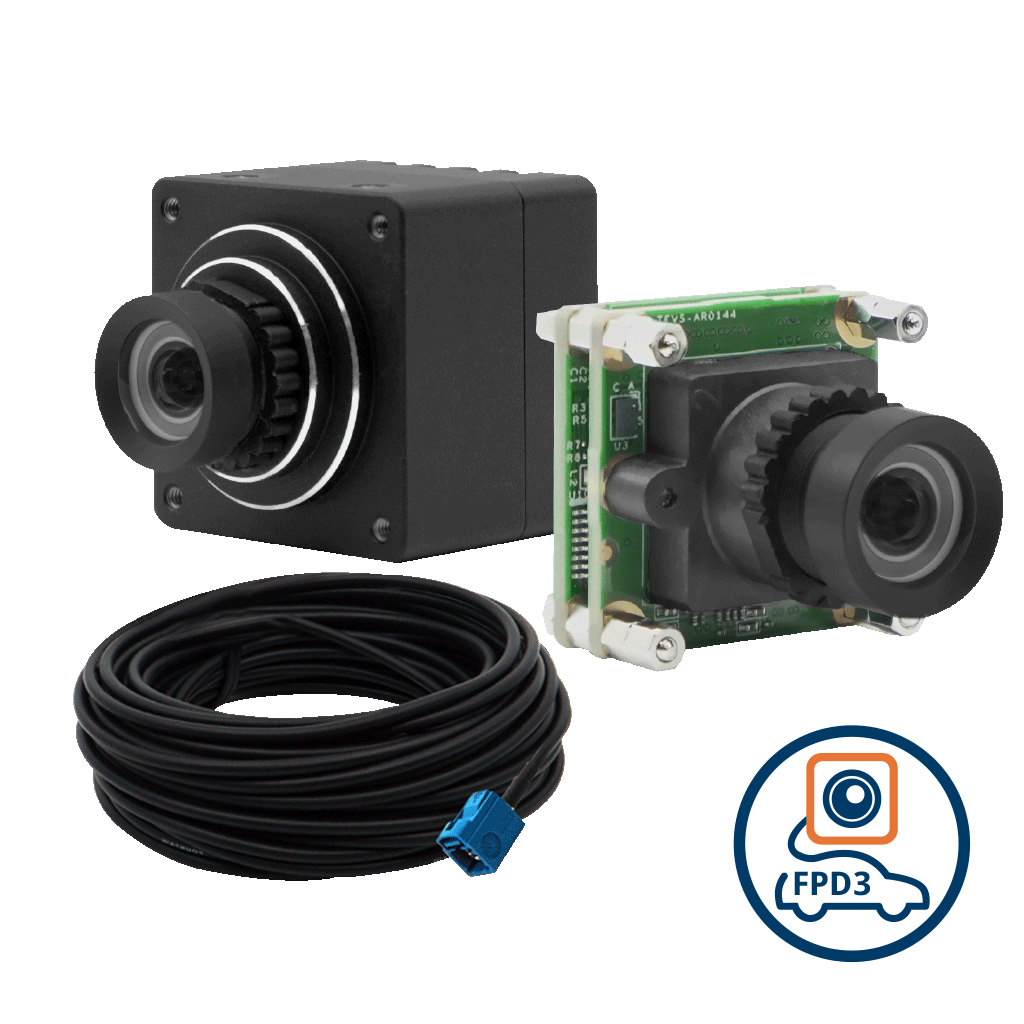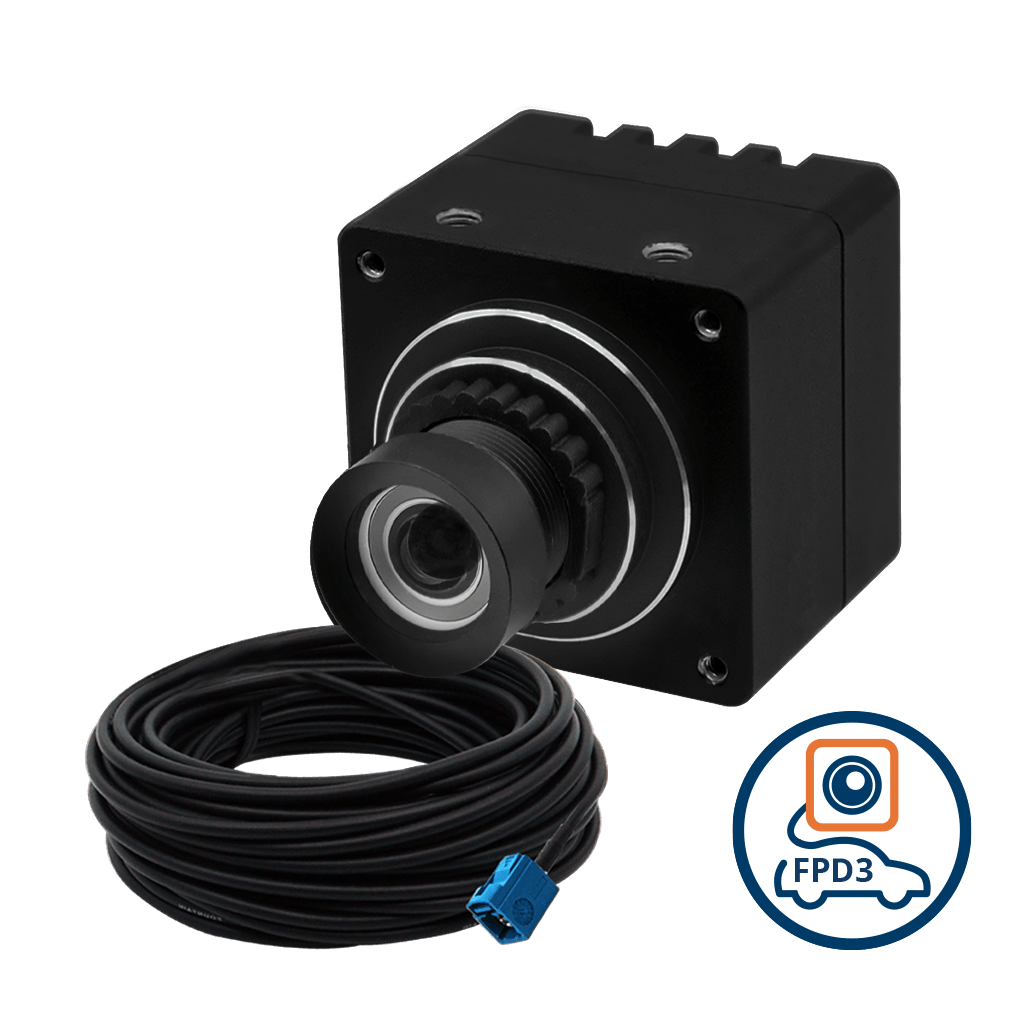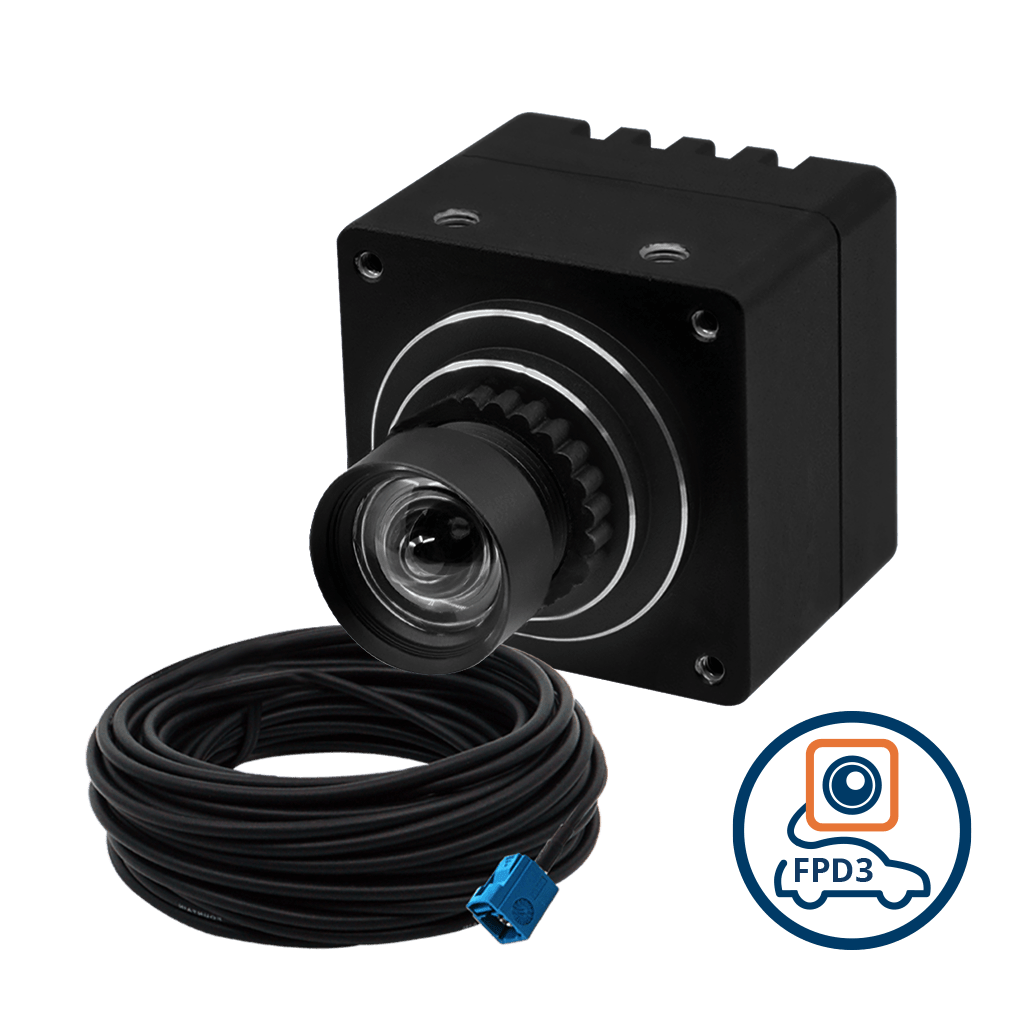Imagine a factory floor bustling with robots, each diligently performing tasks with precision that surpasses human capability. From assembling intricate components to navigating cluttered warehouses, robots are reshaping industries by automating repetitive and complex tasks.
Central to their effectiveness is the ability to “see” and interpret their surroundings accurately. This demand for high-fidelity imaging with seamless data transmission over considerable distances has fueled the adoption of FPD-Link III cameras.
These advanced cameras not only deliver unparalleled image quality but also ensure robust performance in challenging environments. In this blog post, we explore how FPD-Link III cameras are revolutionizing robotic vision systems.
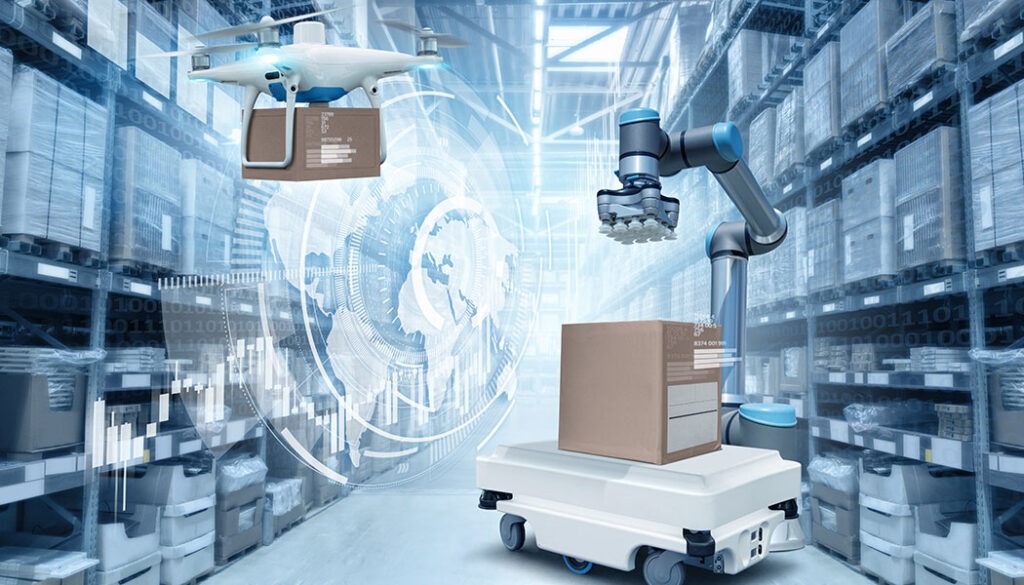
We will examine their standout features, benefits, and diverse applications across industrial and commercial sectors. Join us as we uncover the technology driving the future of robotics.
What are FPD-Link III Cameras?
To understand FPD-link III cameras, we need to understand what FPD-link III is. FPD-Link III is a high-speed serial interface technology developed by Texas Instruments. The “FPD” in FPD-Link stands for “Flat Panel Display,” indicating its origins in the display industry.
FPD-Link III is primarily used for transmitting uncompressed video, audio, and data over a single differential pair cable. The interface is designed to meet the demanding requirements where reliable, high-bandwidth data transmission over long distances is essential. For example, industrial and automotive applications.
An FPD-Link III camera utilizes the FPD-Link III interface to transmit both video and control data between a camera module and the processor. Using differential signaling, FPD-Link III cameras achieve data rates up to 4 Gbps and beyond (with Shielded Twisted Pair, Shielded Twisted Quad, or Coax). This ensures minimal latency and high bandwidth capability. Moreover, they excel in maintaining signal integrity up to a distance of 15 meters.
Limitations of Other Interfaces
Here are the limitations of other interfaces that make them less suitable for certain applications compared to FPD-Link III cameras:
USB Cameras
USB cameras, widely used for their ease of integration and universal compatibility, face limitations in transmission distance. They are typically restricted to transmitting data up to 3 meters. Moreover, the reliability decreases beyond 2 to 3 meters where signal degradation can occur. This can significantly impact reliability, especially in industrial environments where cameras often need to be located far from the processing units. This can impact the efficiency and reliability of the cameras.
MIPI Cameras
MIPI cameras are renowned for their compact size, low power consumption, and high data transfer rates. This makes them ideal for mobile devices and small embedded systems. However, their transmission distance is limited to around 30 centimeters. This limitation makes MIPI cameras less suitable for industrial automation and other applications requiring extended reach.
Ethernet Cameras
Ethernet cameras leverage network infrastructure for data transmission, providing reliable connectivity over long distances. However, they typically offer lower data transfer speeds compared to FPD-Link III cameras. This can be a drawback in applications requiring high-speed and real-time imaging. For example, product sorting in manufacturing or automotive systems where rapid data processing is critical.
Key Features and Advantages of FPD-Link III Cameras
When it comes to enhancing robotic vision and industrial automation, FPD-Link III cameras offer a range of features that set them apart:
Extended Transmission Range
As stated above, FPD-Link III cameras can transmit data reliably up to 15 meters. This provides flexibility in the placement of cameras within large robotic systems. Delivery robots, robotic arms, and autonomous carts will find this extremely useful.
Low Latency
These cameras excel in transmitting data over long distances with minimal latency. This is extremely crucial for real-time decision-making in autonomous mobile robots. Low latency ensures that critical information reaches the processing unit swiftly. This enables rapid responses and enhances overall system safety.
High Bandwidth Capability
With a bandwidth of approximately 4 Gbps, FPD-Link III cameras accommodate high-resolution video and complex data streams with ease. This capability supports detailed imaging requirements where precision and clarity are essential for monitoring and control tasks.
Industrial-grade Build
Designed for robust performance in harsh environments, FPD-Link III cameras boast an industrial-grade build. They are engineered to withstand high temperatures and rugged conditions commonly encountered in industrial settings. This durability ensures reliable operation even in challenging manufacturing floors or outdoor applications.
Noise Immunity
Utilizing differential signaling technology, FPD-Link III cameras offer excellent noise immunity. This feature minimizes signal interference from electrical noise or electromagnetic interference (EMI). This, in turn, ensures stable data transmission over long distances without compromising data integrity.
Scalability and Future-proofing
FPD-Link III technology continues to evolve, ensuring scalability for future enhancements and developments in imaging and data transmission. This scalability future-proofs investments. It provides a reliable foundation for expanding capabilities and meeting evolving industry demands.
Applications of FPD-Link III Cameras in Robotics
Some popular applications of FPD-Link III cameras in robotics include:
Robotics Arms
In industrial settings, robotic arms equipped with FPD-Link III cameras benefit from their extended transmission range and high bandwidth capability. These cameras enable precise vision-guided tasks such as pick-and-place operations, assembly line automation, and quality inspection. The cameras’ low latency ensures real-time feedback. This helps enhance the speed and accuracy of robotic arm movements.
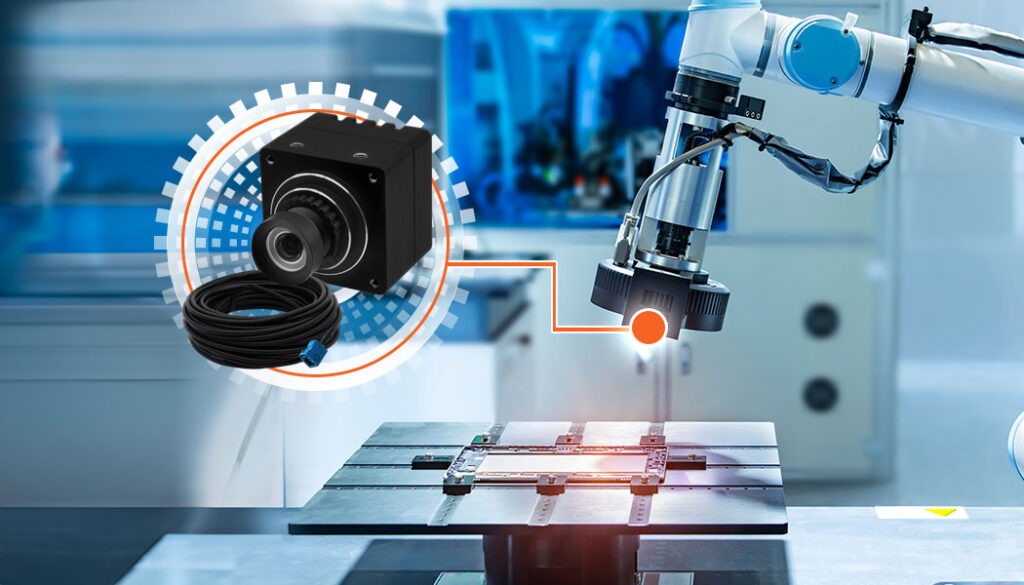
A robotic arm
Delivery Robots
Delivery robots will find FPD-Link III cameras suitable for navigating dynamic environments without running into safety issues. These cameras facilitate obstacle detection, path planning, and localization tasks essential for autonomous navigation. Thus, the robots can be used for tasks like last-mile delivery for e-commerce, food and goods delivery, and movement of goods within warehouses.
Agricultural Robots
In agriculture, FPD-Link III cameras play a pivotal role in precision farming applications. Mounted on agricultural robots, these cameras provide high-resolution imaging for crop monitoring, weed detection, and yield estimation. Their ability to operate in outdoor environments ensures consistent performance in challenging field conditions. This eventually helps to optimize farming practices and increase productivity.
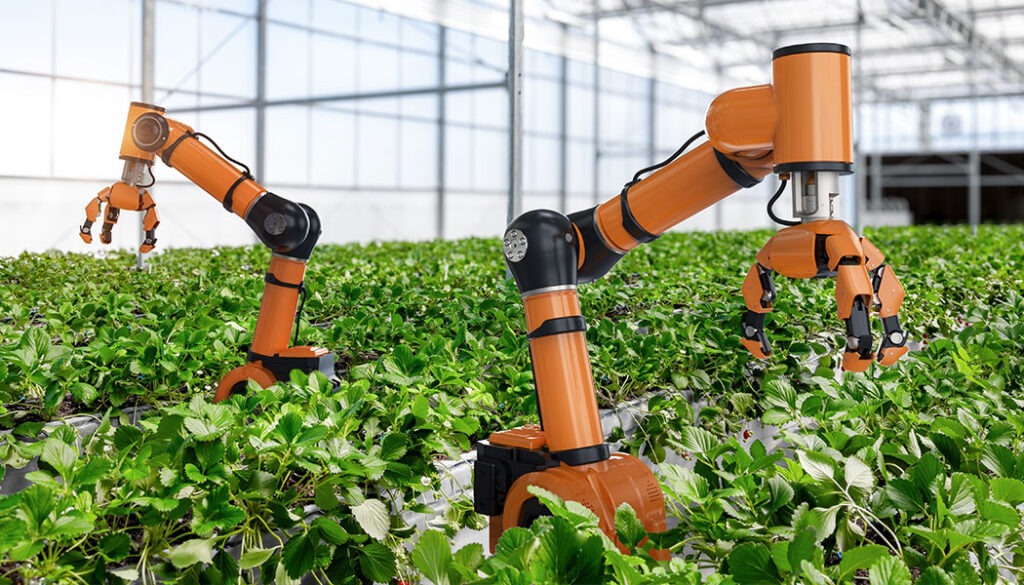
An agricultural robot
Service Robots
Service robots, ranging from hospitality to healthcare applications, benefit from FPD-Link III cameras. These robots can be used for various tasks such as human interaction, navigation, and object recognition. These cameras enable robots to perceive and respond to their surroundings accurately, enhancing user experience and operational efficiency. For example, in retail settings, service robots can autonomously navigate aisles, identify inventory levels, and assist customers.
Patrol Robots
FPD-Link III cameras are integral to patrol robots used for perimeter security and surveillance. These cameras provide high-definition video capture and streaming capabilities which is essential for monitoring large areas in real-time. FPD-Link III cameras enable patrol robots to detect intrusions, identify threats, and provide actionable intelligence to security personnel. This application enhances security measures by ensuring continuous surveillance and prompt response to potential threats.
Surveillance Drones
In security and surveillance applications, FPD-Link III cameras are integrated into drones for aerial monitoring of large areas. These cameras provide real-time video streaming with high-resolution imaging. This allows security personnel to monitor critical infrastructure, public events, and emergency situations from remote locations. Moreover, surveillance drones enhance situational awareness and response capabilities. The ability of FPD-Link III cameras to transmit data to long distances comes in handy here.
TechNexion – Cameras for Robotic Vision
TechNexion offers advanced embedded vision cameras tailored for robotic tasks. They are equipped with essential features like global shutter, long-distance transmission, high bandwidth, and low latency. These features ensure optimal performance in demanding robotic applications.
TechNexion’s FPD-Link III camera portfolio includes a range of models, such as the VLS-FPD3-AR0144-CB. These cameras are designed to meet the specific needs of industrial automation, autonomous robots, smart vision systems, and more. Additionally, they are are built with industrial-grade durability and reliability, making them ideal for robots deployed in harsh environments.
For more information on how TechNexion’s advanced vision solutions can empower your robotic embedded vision applications, please contact us.

